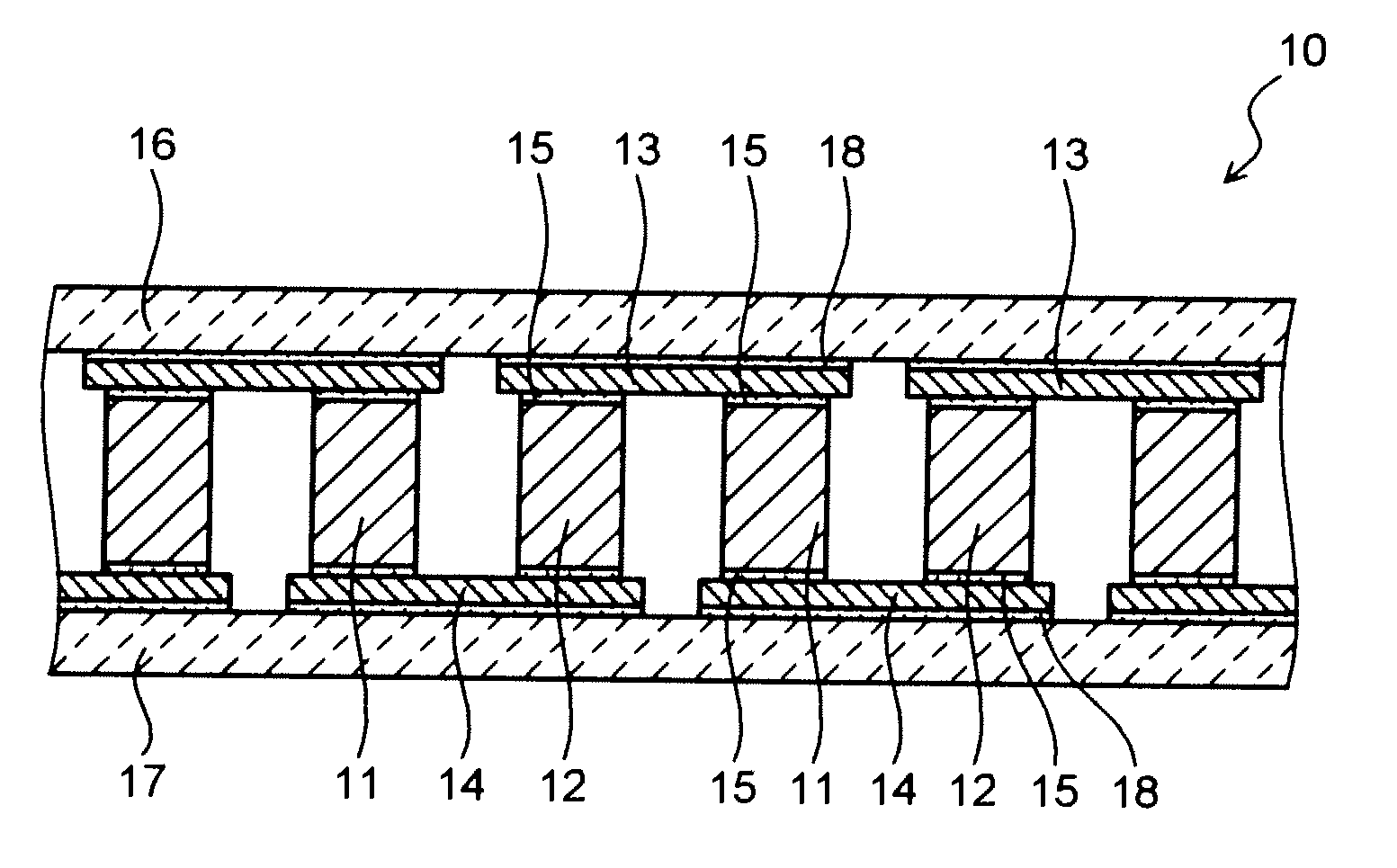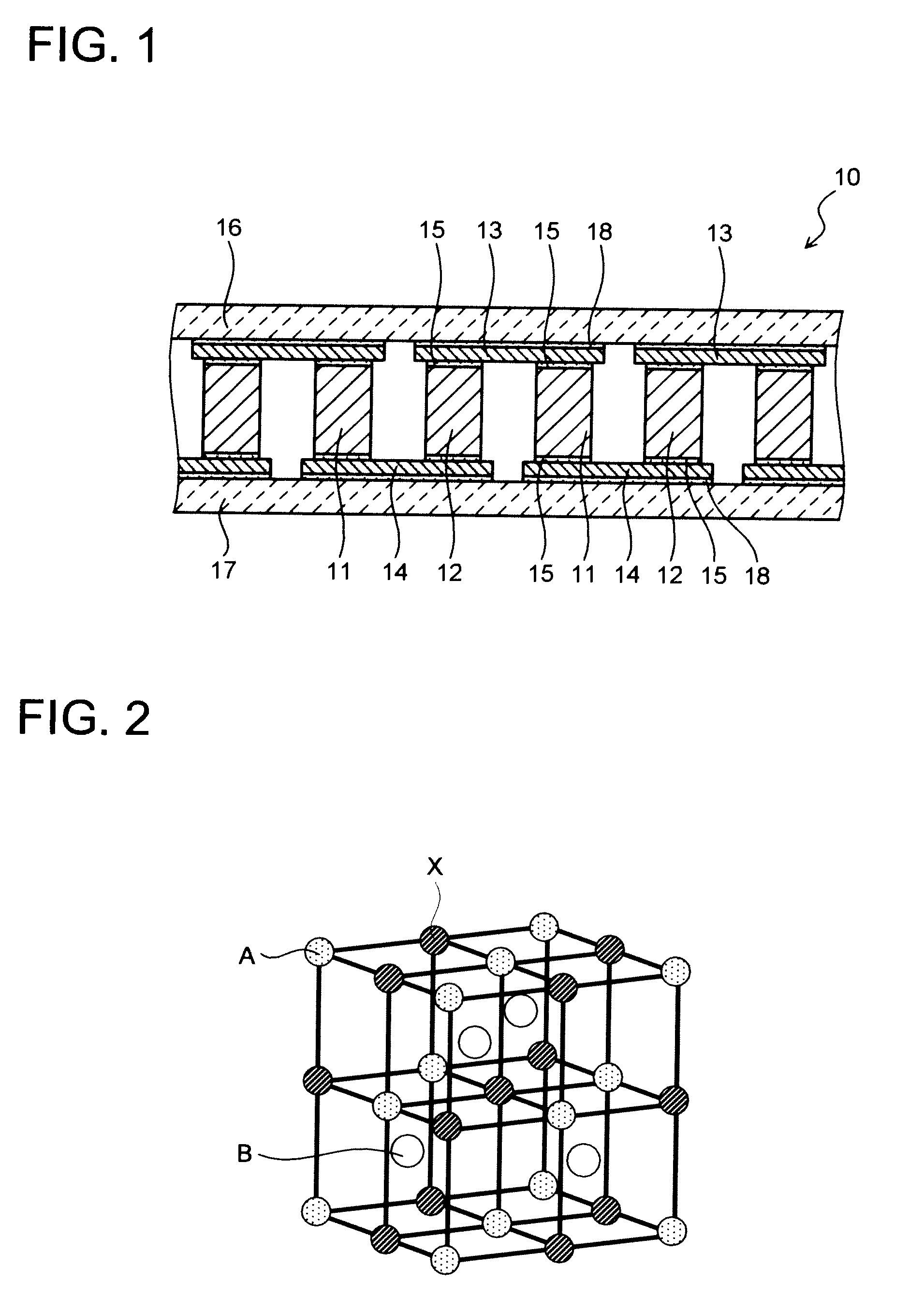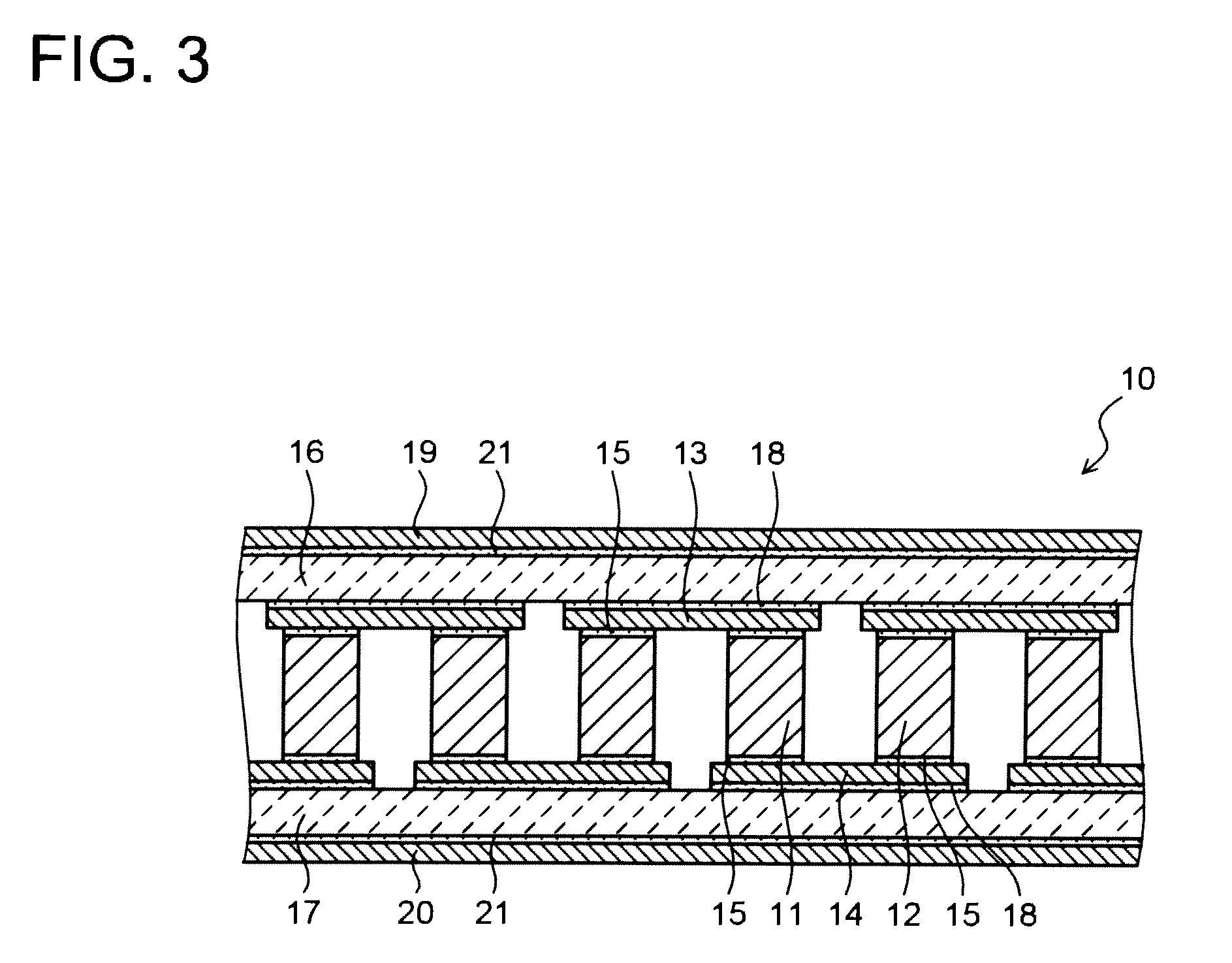Thermoelectric conversion module, and heat exchanger, thermoelectric temperature control device and thermoelectric generator employing the same
- Summary
- Abstract
- Description
- Claims
- Application Information
AI Technical Summary
Benefits of technology
Problems solved by technology
Method used
Image
Examples
example 1
[0055]The thermoelectric conversion module whose structure is shown in FIG. 3 was produced by the following procedure. First, a production example of the thermoelectric element is described.
[0056](N-Type Thermoelectric Element)
[0057]Ti, Zr and Hf each having a purity of 99.9%, Ni and Sn each having a purity of 99.99% and Sb having a purity of 99.999% were prepared as raw materials. They were weighed and mixed so as to have a composition (Ti0.3Zr0.35Hf0.35)NiSn0.994Sb0.006. The material mixture was charged into a copper hearth which was water cooled in an arc furnace, and the furnace interior was evacuated to 2×10−3 Pa. Then, Ar having a high purity of 99.999% was introduced to have −0.04 MPa, and the material mixture was arc-melted in the decompressed Ar atmosphere.
[0058]The obtained metal lump was pulverized to produce alloy powder having a particle diameter distribution peak in two ranges of 20-30 μm and 80-90 μm. The alloy powder was filled into a 100-mm carbon mold and undergone...
example 2
[0072]In Example 2, the alloy powder used as the raw material to be sintered for the thermoelectric element was produced by the atomization process. The atomization process is relatively easy to control a particle diameter, and alloy powder having a distribution peak in two ranges of 20-30 μm and 80-90 μm was produced in the same manner as in Example 1. The n-type and p-type thermoelectric elements were produced in the same manner as in Example 1 except that the above alloy powder was used, and a thermoelectric conversion module was also produced similarly. The TCT test was performed on the obtained thermoelectric conversion module under the same conditions as in Example 1. As a result, it was confirmed that even after the operation was repeated for 1000 times or more, no break or shape change was observed in the thermoelectric element, and the initial performance was maintained.
examples 3 and 4
[0073]The hot press of the thermoelectric element preparation conditions (sintering conditions) of Example 1 was changed to HIP, and a thermoelectric element having mechanical properties different from those of Example 1 was produced. Thermoelectric conversion modules were produced in the same manner as in Example 1 except that the above thermoelectric element was used. The thermoelectric conversion modules were undergone the TCT test. Table 3 shows the mechanical properties of the individual thermoelectric elements and the TCT evaluated results of the thermoelectric conversion modules. The TCT evaluated results in Table 3 show the number of times that breakage, peeling and the like did not occur at the thermoelectric element and the bonded portion when it was determined that the high temperature side of each of the individual thermoelectric conversion modules was 500° C. and the low temperature side was 25° C., and an operation of keeping the above condition for 10 minutes and lowe...
PUM
| Property | Measurement | Unit |
|---|---|---|
| Temperature | aaaaa | aaaaa |
| Fraction | aaaaa | aaaaa |
| Pressure | aaaaa | aaaaa |
Abstract
Description
Claims
Application Information
 Login to View More
Login to View More - R&D
- Intellectual Property
- Life Sciences
- Materials
- Tech Scout
- Unparalleled Data Quality
- Higher Quality Content
- 60% Fewer Hallucinations
Browse by: Latest US Patents, China's latest patents, Technical Efficacy Thesaurus, Application Domain, Technology Topic, Popular Technical Reports.
© 2025 PatSnap. All rights reserved.Legal|Privacy policy|Modern Slavery Act Transparency Statement|Sitemap|About US| Contact US: help@patsnap.com



